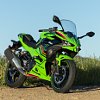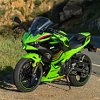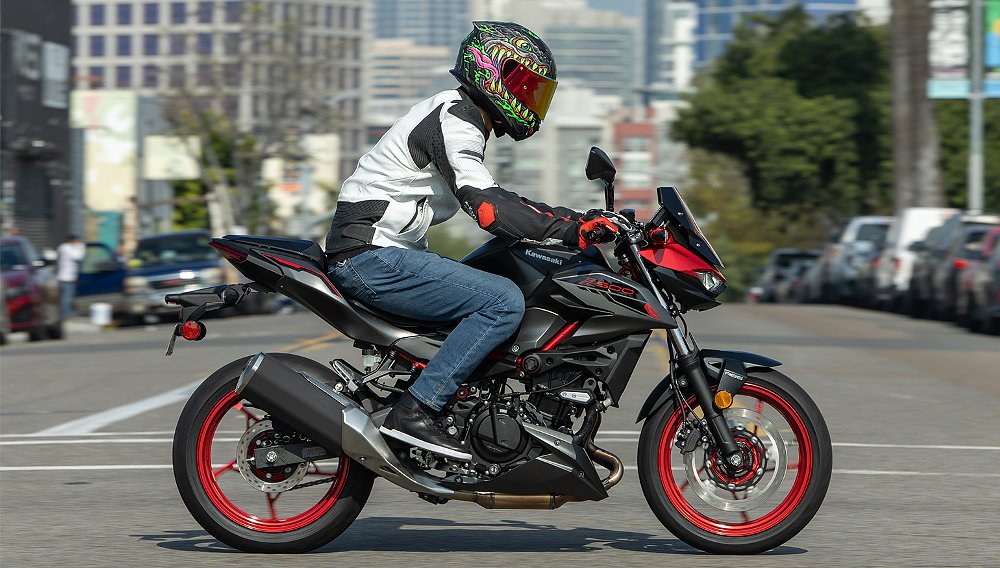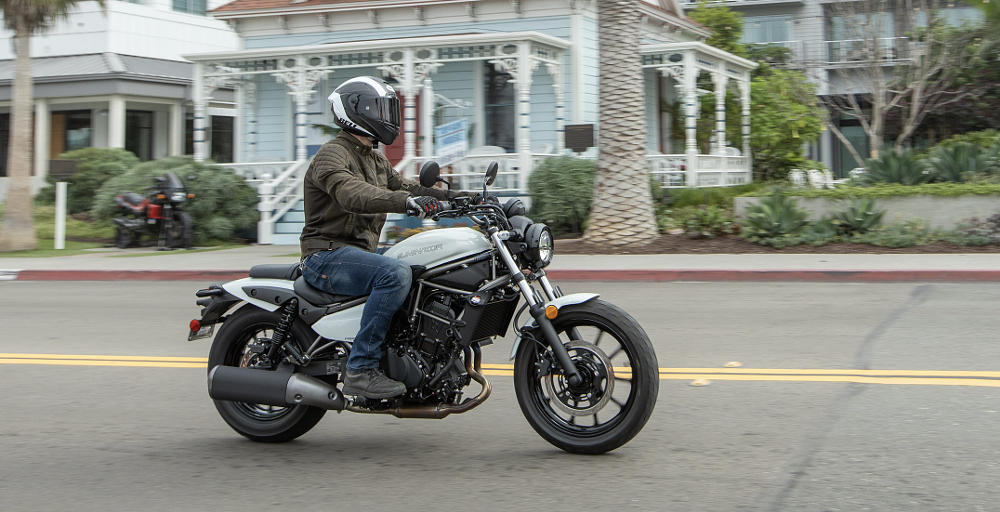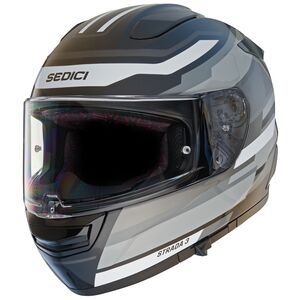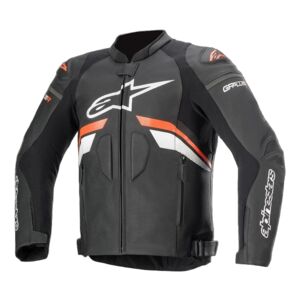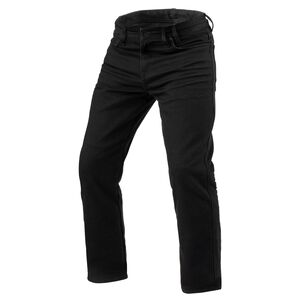Kawasaki’s new Ninja 500 is a good motorcycle. We all figured it would be, considering it’s largely the same as the outgoing Ninja 400, which was already great. So, the real question might be: Why does the Ninja 500 exist at all?
Well if it ain’t broken, try to make it better. That’s a fairly common mantra in the world of performance machines, which is how we have all grown to live in an age of sport bikes that are better than ever, from budget bullets to superlative superbikes. Customers told Kawasaki that the Ninja 400 would be better with a little more power, so Team Green went about adding it.
Then there’s some marketing, no doubt. Updating a motorcycle is one way to get attention, and a facelift paired with a displacement bump is an understandable move for Kawasaki to reignite interest in its best-selling Ninja. There’s just no denying that 500 is more than 400, and more is the opposite of less, which is bad for business.
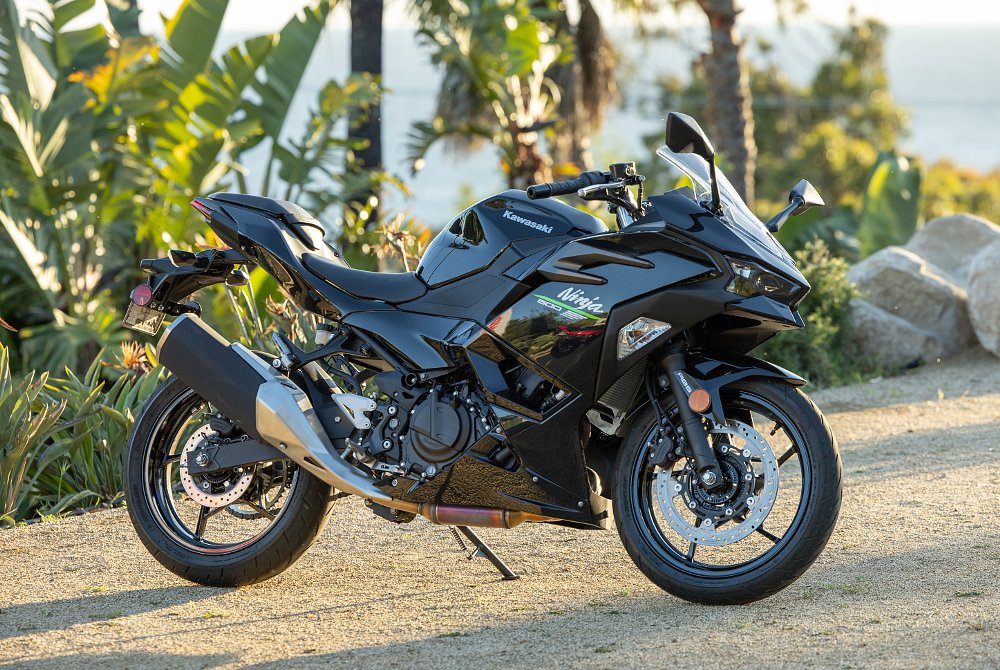
Along with all of that, the Ninja 500 makes a couple of sneaky moves. First, it widens the swath of available baby Ninja models with more features and options than ever. Second, it captures an especially impressive blend of capabilities that might make it better than its naked sibling. This is debatable, and also very rare.
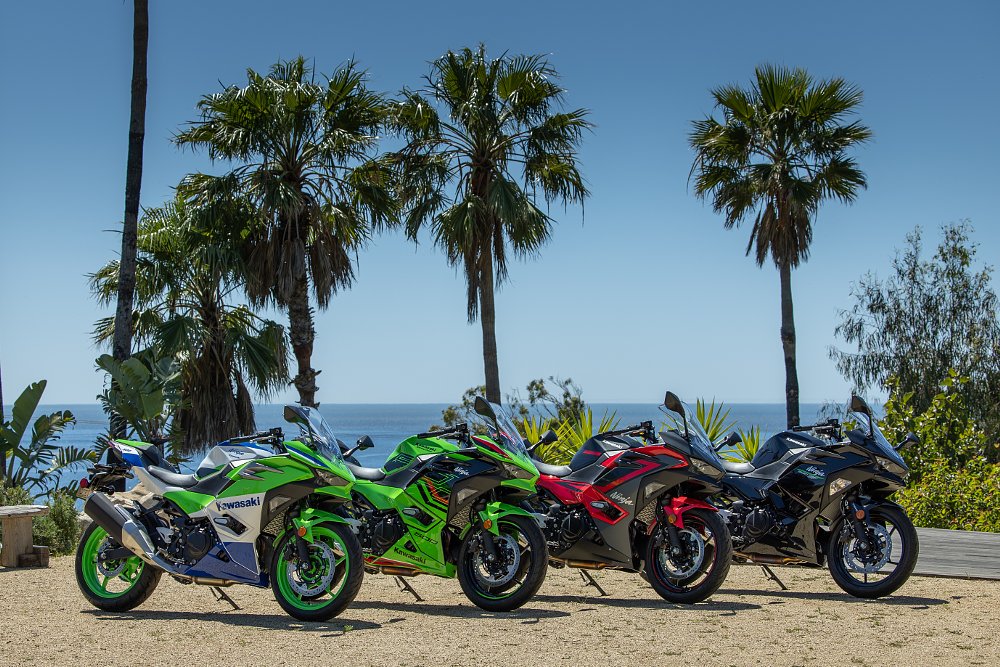
From 400 to 500
If you’re familiar with that fraternal twin, the Z500, you might remember that our man Dustin recently returned from San Diego, California with a review of that machine. As you would expect, many of the updates to the Z are mirrored in the Ninja. An additional 6.8 mm of stroke bumps the engine to 451 cc, with slightly revised versions of the cams, airbox, clutch, and exhaust to accommodate the updated pistons, connecting rods, and crankshaft. Kawasaki claims 51 horsepower at 10,000 rpm, which fits with what we learned about Team Green’s Eliminator model that debuted last year. Even if we round down to an even 50, that still represents a bump of a handful of ponies over the Ninja 400.
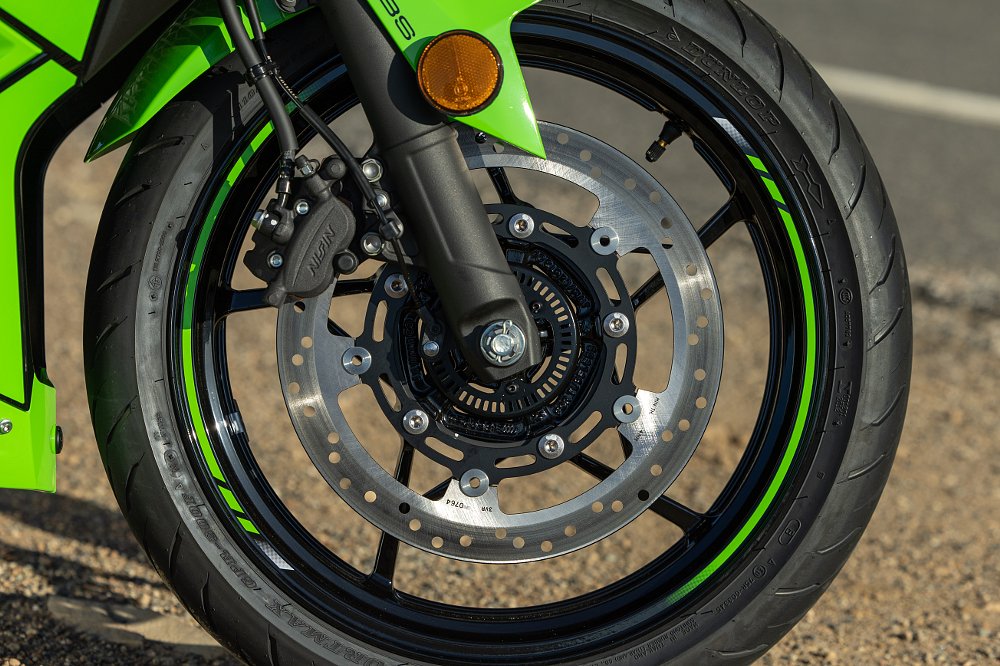
And as Dustin pointed out in his piece, the external measurements of the engine didn’t change, and that means the Ninja 500’s power plant shares the same frame, suspension, wheels, brakes, and basic dimensions of the outgoing Ninja 400. There’s some new LED lighting and new dash options, both of which vary by trim level, and a new shape to the saddle meant to keep the rider from sliding forward into the back of the fuel tank.

There are six (!) different price levels for the Ninja 500, and happily the most affordable, non-ABS version is the same price as the base Ninja 400 was in 2023 — $5,299 (or $200 more for the Kawasaki Race Team livery). Ninja 500 buyers will pay an extra $400 to $600 for an ABS-equipped bike, depending on whether they want it in black, white, or red.
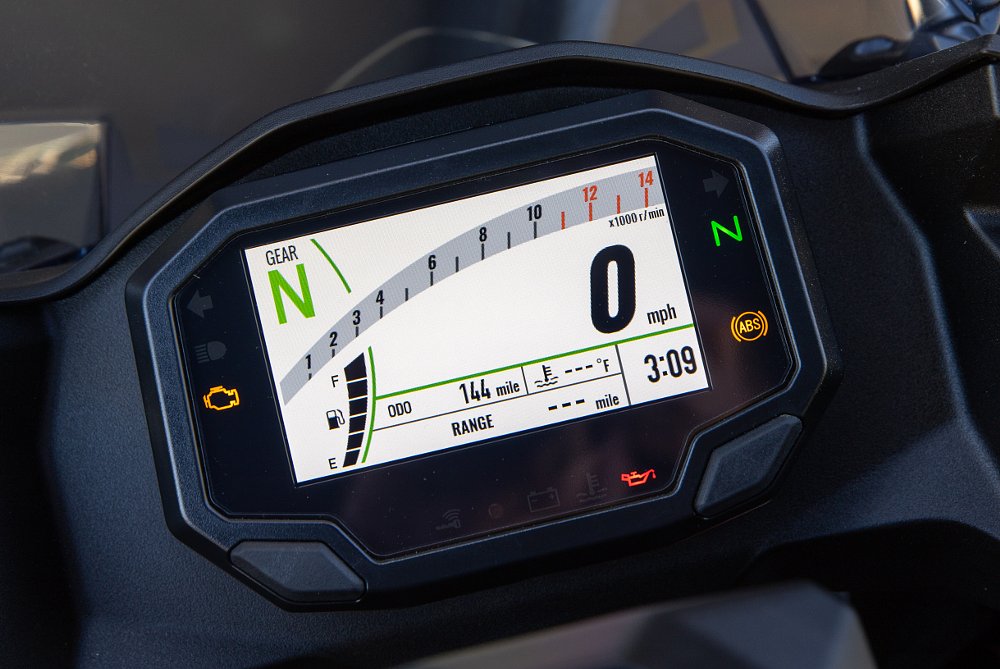
As with the Z500, the upper echelon of the Ninja 500 model line are SE models, which come equipped with a TFT dash, keyless ignition, a larger windshield, a USB-C plug in the cockpit, LED rear turn signals, a solo-seat cowl, frame sliders, and scratch-protector pads for the rear and sides of the fuel tank. Arguably a steal for the $500 premium Kawasaki is charging over the regular ol’ ABS bikes.
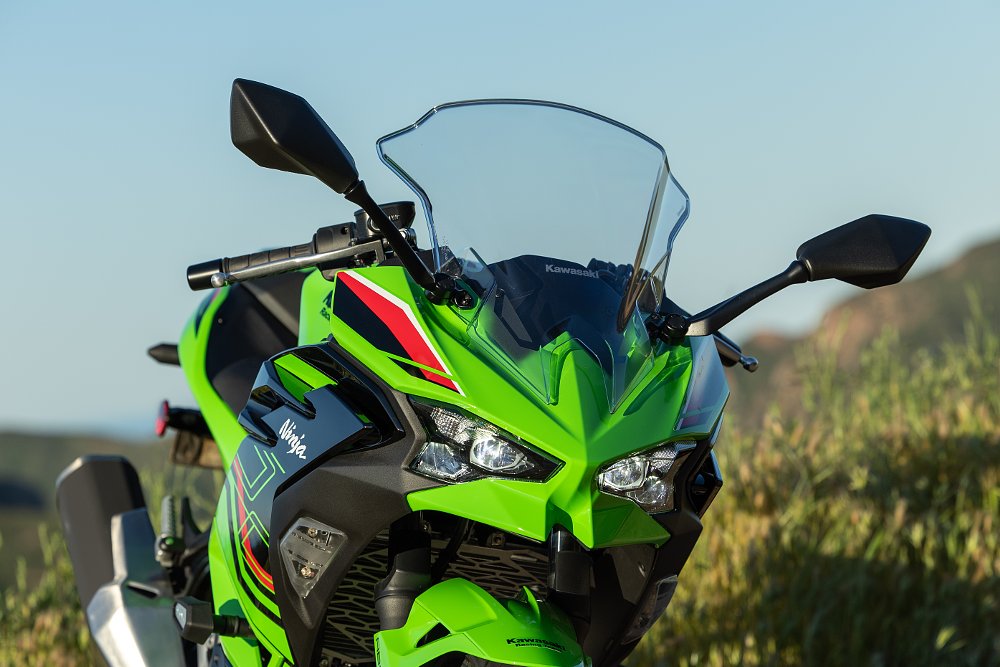
From zero to 60
The Ninja 500 experience is mostly the same as riding a Ninja 400 was, which is to say almost universally excellent. The riding position is fairly upright, despite the Ninja’s racy looks, and yet the footpegs are high enough that they won’t drag even at a track day. A seat height of 30.9 inches (about an inch higher than a Honda Grom) means legroom can feel tight for taller riders, but all in all the smallest Ninja continues to be thoroughly welcoming.
It only gets better once you’re rolling. With a curb weight around 380 pounds and relatively skinny tires, the Ninja 500 is ultra nimble and extremely easy to ride. The clutch pull is light (despite slightly heavier springs in the 500) and the brakes are just strong enough to make you believe in the machine. As if that wasn’t enough, a few of the upgrades on the SE model make a notable difference. The TFT screen is nice, no doubt, though the all-new, two-color LCD dash on the base bike is just fine for a lil’ terrier like this.
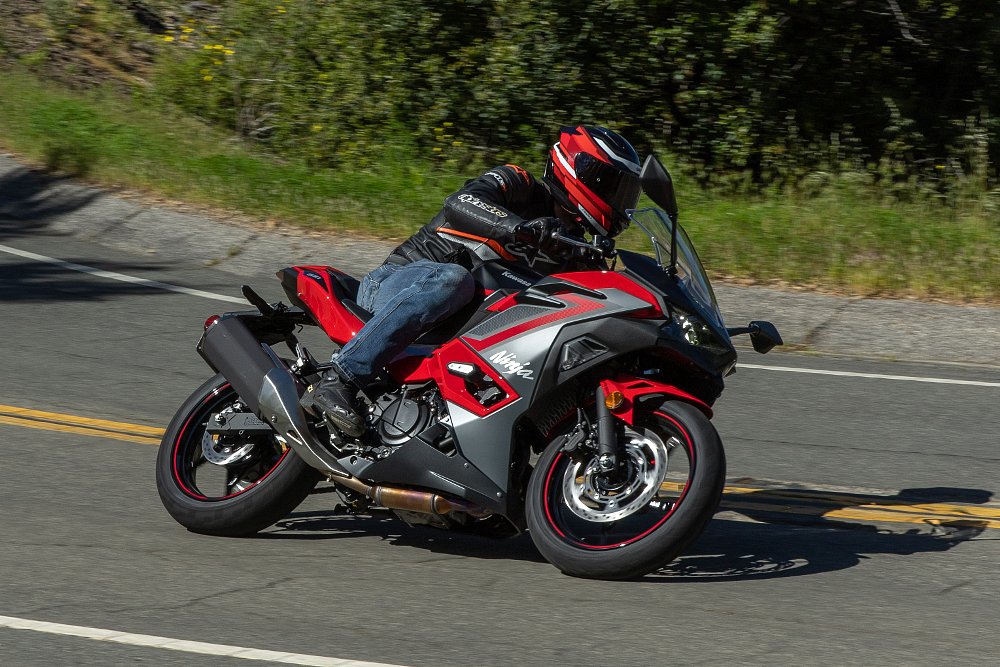
The newly shaped seat seems a little better, relieving some of the pitch forward into the tank and therefore some residual pressure on my wrists. The accessory that makes the biggest difference for me is the tall windshield. Along with slightly wider bodywork (again, compared to the 400), the extra width and 2.5 inches of height take the Ninja 500’s comfort level at highway speed from acceptable to agreeable.
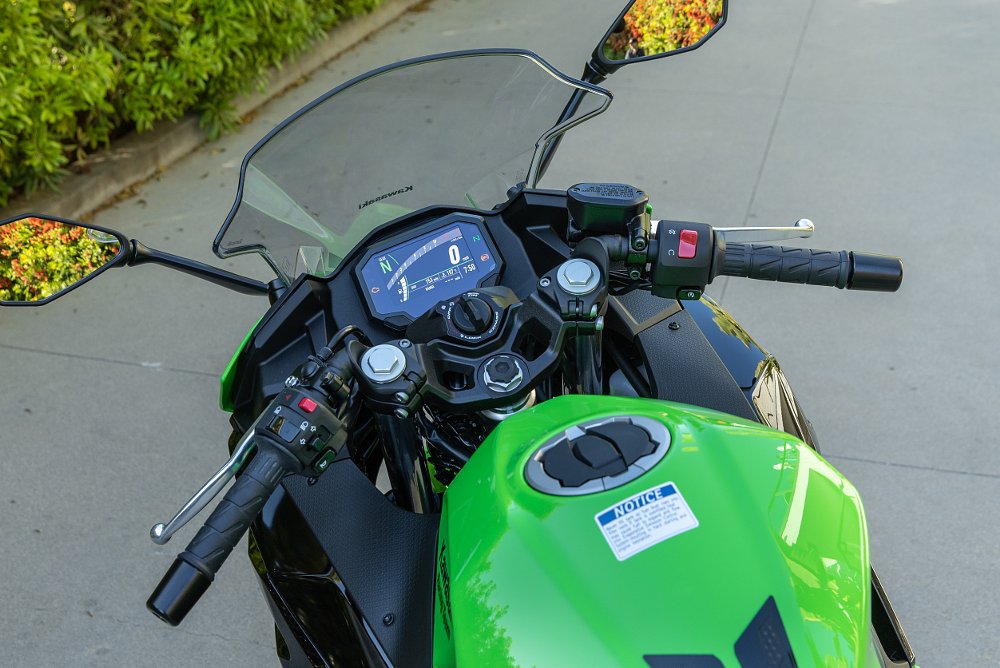
At six feet, two inches tall, I found that the taller screen pushes most of the wind away from my torso and the already comfy riding position makes it all the better. After riding Dustin’s Z500 loaner to the Ninja 500 event, I was tired from leaning into the wind and downright sick of mirrors that, at speed, appear to have voltage running through them. The Ninja 500 SE felt like a sport-touring bike by comparison.
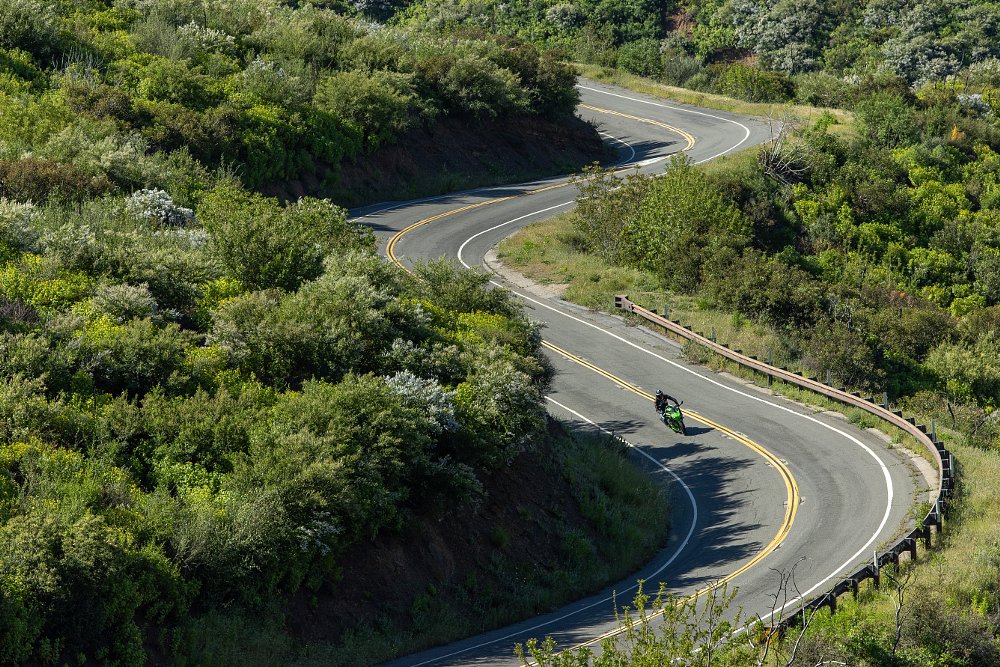
From great to good
But it’s more than just that. It’s a fully capable gateway to track days and racing, not to mention an icon in sport bike culture, despite being small, inexpensive, and not especially powerful. In other words, it’s a real sport weapon, from stem to stern. And it just so happens to be comfortable enough to outshine its naked sibling.
Take a minute to process how unlikely that is. From where I’m sitting, the sport version of a bike is almost never the better machine these days. Unless you’re going to live part time at a racetrack, an Aprilia Tuono 660 makes more sense than an RS660, and a Ducati Streetfighter V2 will serve all of the purposes and more of a Panigale V2. Et cetera, et cetera. Because the Ninja 500 is so close in riding position to the Z500, adding wind protection and keyless ignition for only $100 more makes it a no brainer.
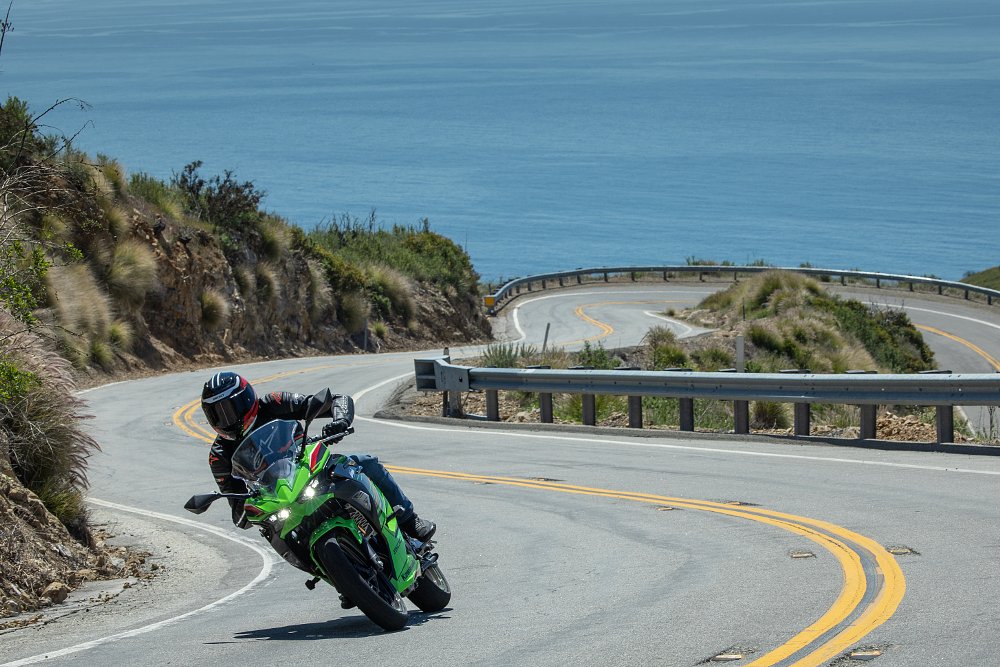
It is a terrific motorcycle, the Ninja 500, but it’s not perfect. The mirrors are clearer than the Z but are far away from the rider’s face so the field of view is a little narrow. Also, being a budget bike means the suspension is fairly unrefined and not very adjustable.
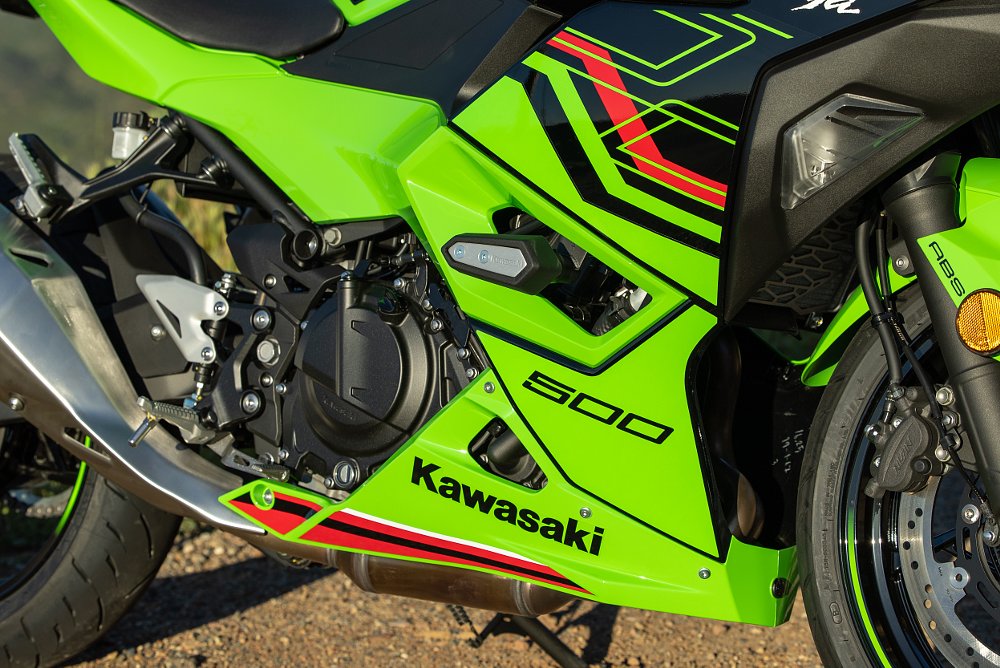
I’m a little annoyed that the buttons to control the dash and menus aren’t on the left switchgear. It’s the kind of thing I would let slide except that even more expensive Kawasaki’s use the same system, and dammit it’s undignified. Especially for a bike this good. Speaking of which, why in the name of Kawasaki Holy Industries does my right foot still hit the muffler? Is it so that when I upgrade to a Z900 and the same thing happens I’m not surprised? C’mon!
If you try hard enough, you might just muster up some anger that the wee Ninja has been diluted. A slightly larger engine means a slightly lower redline (down to 11,700 rpm from nearly 13,000), and a TFT display with Bluetooth connectivity means some of the simplicity is gone. Perhaps worst of all, it’s heavier — 381 pounds on our scales, or nine pounds more than the last Ninja 400 we had in the shop. Does any or all of this erode the bedrock of what makes small motorcycles good? Maybe. The charm is still alive, though.
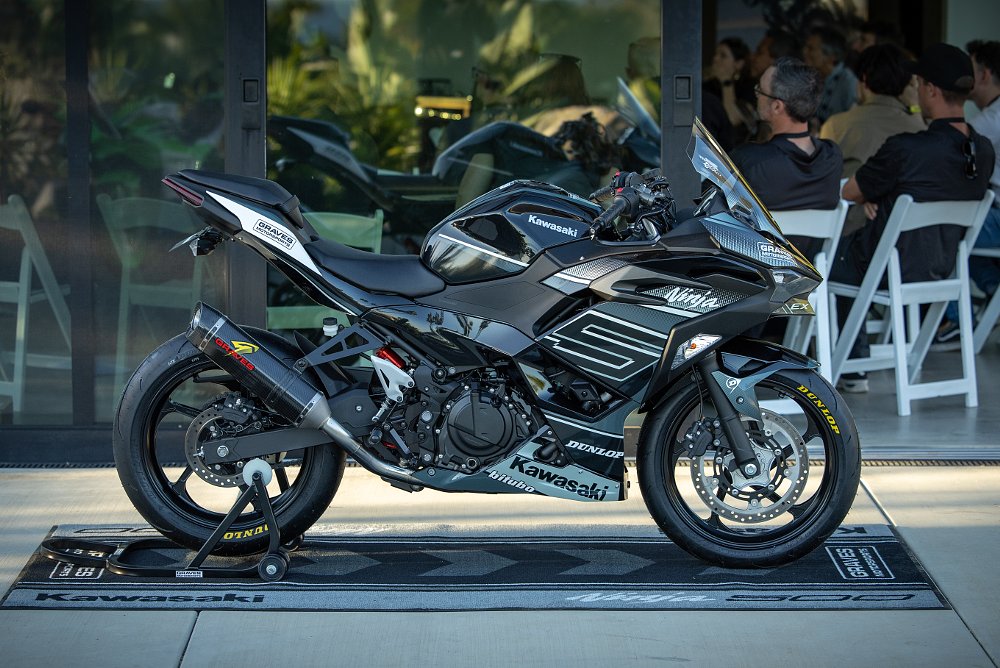
When Spurgeon rode the new-for-2018 Ninja 400, he made plenty of comparisons to the outgoing Ninja 300, and kept going back to the question of whether the tiniest Ninja had gotten too big and too fast. For beginners, or for what it was supposed to be. The answer was no, it hadn’t, and that’s the same thing I’m telling you now.
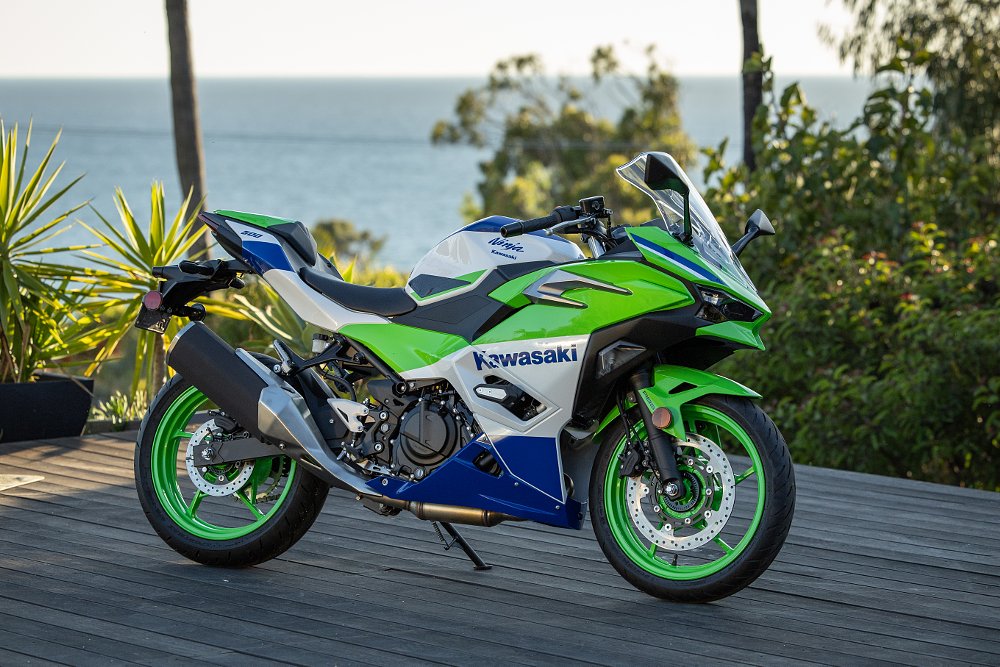
The fact is, Kawasaki’s research within its own customer base showed that people wanted a little more power, so the engine size was bumped up. And whether you or I like it or not, “people” want technology. That’s why the Ninja 500 exists. To be willing and playful in nearly any riding situation, and to stand as the next testament to the brilliant recipe that has slowly evolved over nearly four decades. Which it does.
| 2024 Kawasaki Ninja 500 | |
|---|---|
| Price (MSRP) |
$5,299 (base model) $5,499 KRT Edition $5,699 to $5,899 with ABS $6,399 SE ABS or KRT SE ABS $6,599 40th Anniversary Edition |
| Engine | 451 cc, liquid-cooled, eight-valve, parallel twin |
|
Transmission, final drive |
Six-speed, chain |
| Claimed horsepower | 51 @ 10,000 rpm |
| Claimed torque | 31.7 foot-pounds @ 7,500 rpm |
| Frame | Steel trellis |
| Front suspension | 41 mm fork; 4.7 inches of travel |
| Rear suspension | Single shock, adjustable for preload; 5.1 inches of travel |
| Front brake | Nissin single two-piston caliper, 310 mm disc, ABS optional |
| Rear brake | Nissin single-piston caliper, 220 mm disc, ABS optional |
| Rake, trail | 24.7 degrees, 3.6 inches |
| Wheelbase | 54.1 inches |
| Seat height | 30.9 inches |
| Fuel capacity | 3.7 gallons |
| Tires | Dunlop Sportmax GPR300, 110/70R17 front, 150/60R17 rear |
| Measured weight | 381 pounds |
| Available | Now |
| Warranty | 12 months |
| More info | kawasaki.com |








